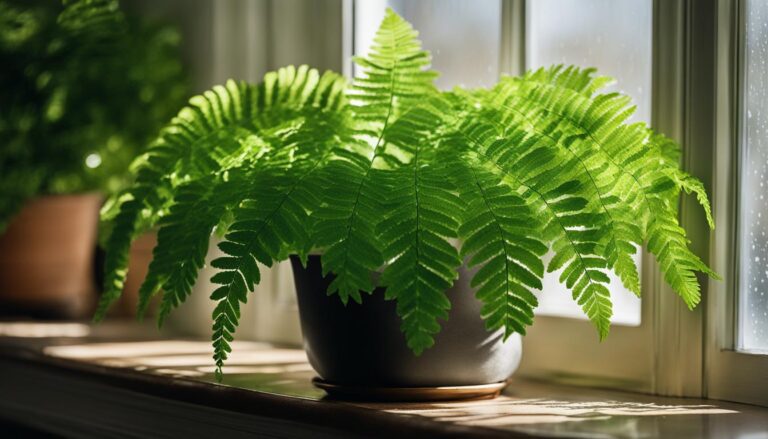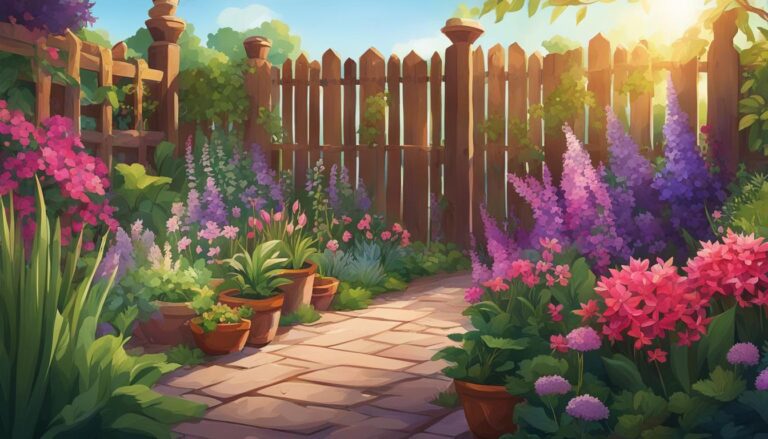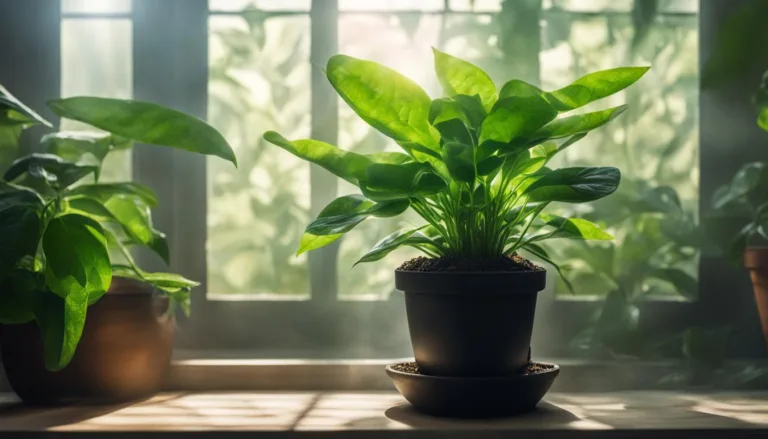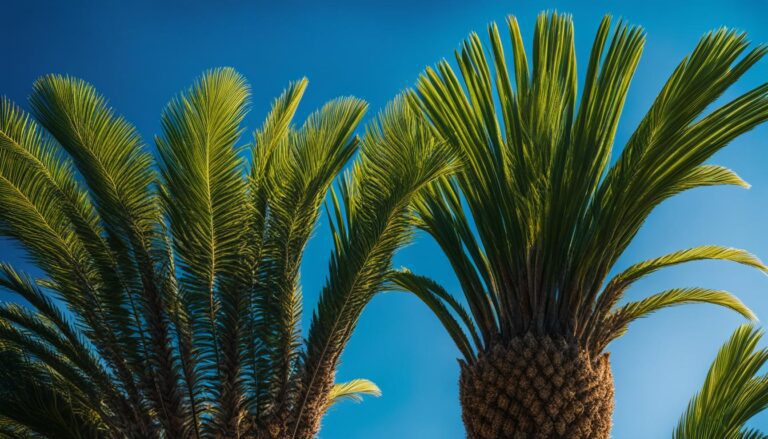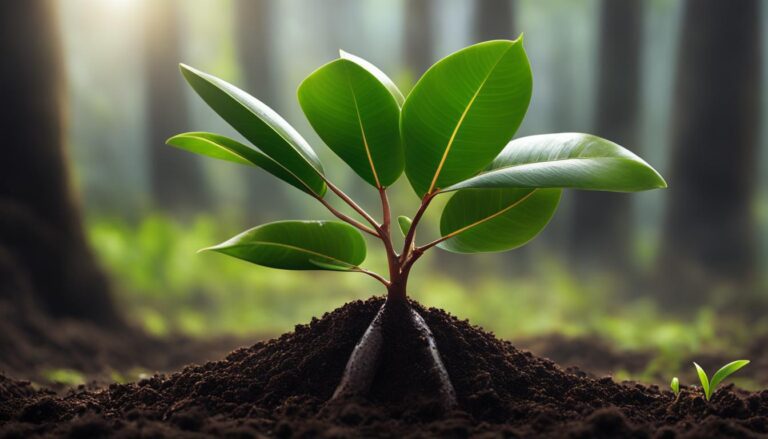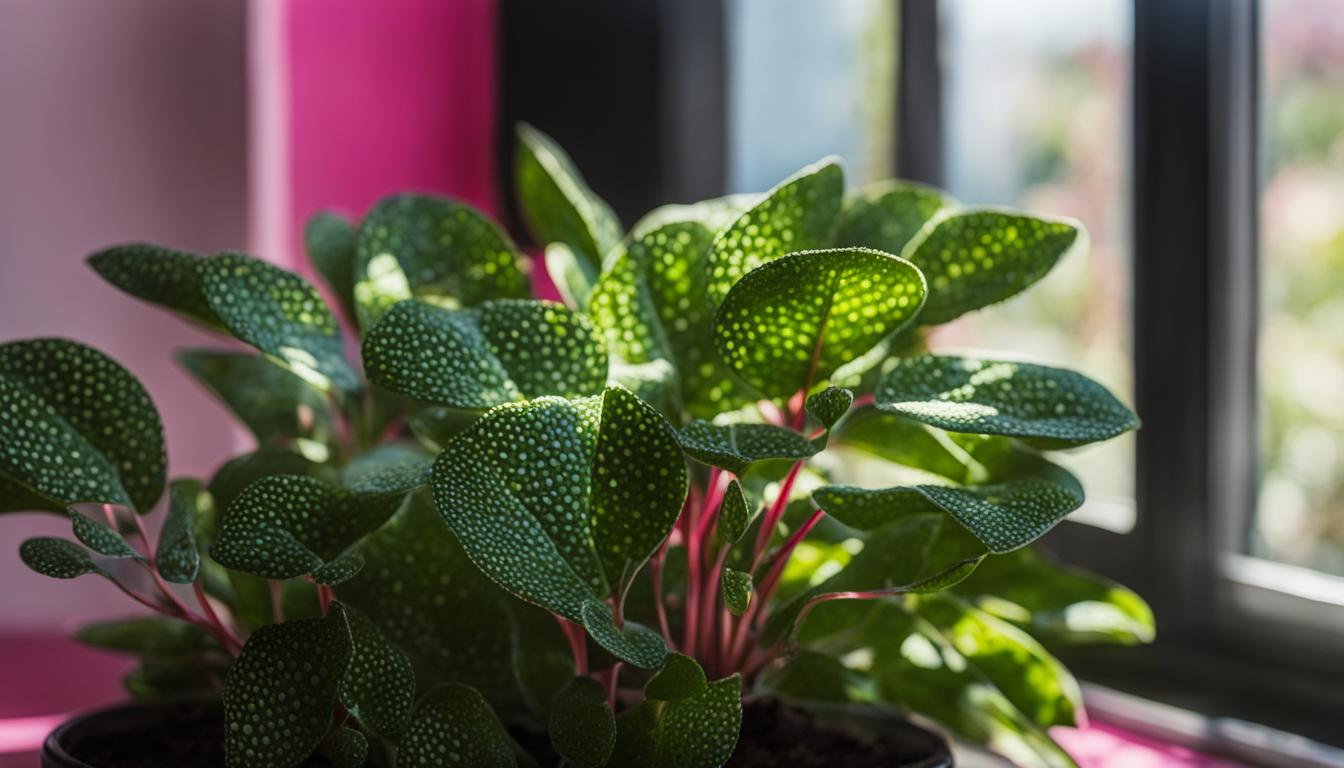
Welcome to my guide on growing and caring for the Polka Dot Plant (Hypoestes phyllostachya), a stunning indoor plant with decorative foliage and vibrant colors. This easy-care, low-maintenance houseplant is known for its variegated leaves, featuring spotted patterns that add a touch of whimsy to any space.
Native to Madagascar, the Polka Dot Plant belongs to the Acanthaceae family. Its green leaves are often flecked with pink, but you can also find varieties with purple, white, or red variegation. Its compact size makes it perfect for indoor cultivation, but it can also be grown outdoors as an annual in warm climates.
In this article, I will provide you with planting and care tips to help your Polka Dot Plant thrive. We’ll discuss the ideal growing conditions, common issues, and troubleshooting techniques.
Whether you’re a beginner or an experienced plant parent, this guide will help you keep your Polka Dot Plant healthy and beautiful. So, let’s dive in and learn how to grow and care for this charming and colorful houseplant!
Planting and Care Tips for Polka Dot Plants
To successfully grow a Polka Dot Plant, it is important to provide the right planting conditions and care. Here are some tips to help you nurture your Hypoestes phyllostachya:
- Soil: Plant your Polka Dot Plant in rich, well-drained potting mix. This will ensure proper root development and prevent waterlogging.
- Light: Choose a warm location with bright, indirect light for indoor plants. If growing outdoors, provide partial sun to protect the plant from intense sunlight.
- Watering: Water your Polka Dot Plant when the top half-inch of soil has dried out. Avoid overwatering, as this can lead to root rot. Watering once a week is usually sufficient, but adjust frequency according to the plant’s specific needs and environmental conditions.
- Fertilizer: Feed your Polka Dot Plant with a balanced liquid fertilizer once a month during the spring and summer. This will provide the necessary nutrients for healthy growth and vibrant foliage.
- Growth Cycle: Polka Dot Plants complete their growth cycle after flowering, which typically gives them a lifespan of one to two years. After flowering, the plant may enter a dormant phase, during which it will require less water and fertilizer.
By following these planting and care tips, you can ensure that your Polka Dot Plant thrives and displays its characteristic variegated leaves in vibrant colors.
Polka Dot Plant
| Aspect | Requirements |
|---|---|
| Soil | Rich, well-drained potting mix |
| Light | Bright, indirect light indoors; partial sun outdoors |
| Watering | When top half-inch of soil is dry; avoid overwatering |
| Fertilizer | Monthly feeding with balanced liquid fertilizer |
| Growth Cycle | Complete after flowering; one to two-year lifespan |
Remember to observe your plant closely and adjust its care routine based on its specific needs. With proper attention and care, your Polka Dot Plant will continue to grace your indoor or outdoor space with its decorative foliage.
Ideal Growing Conditions for Polka Dot Plants
When it comes to creating the ideal growing conditions for your Polka Dot Plants (Hypoestes phyllostachya), there are a few key factors to consider. These decorative indoor plants thrive in bright, indirect light, making them a perfect addition to any well-lit room. To ensure optimal growth, it is best to place your Polka Dot Plant in a warm environment with a minimum temperature of 60 degrees Fahrenheit.
Polka Dot Plants also require a humidity level of at least 50 percent. They are particularly well-suited to bathrooms with windows, where they can benefit from the naturally higher humidity levels. To provide the best conditions for your plant, it is recommended to mist the leaves with water or use a humidifier to maintain the desired humidity level.
Well-draining soil rich in organic matter is essential for the growth and health of your Polka Dot Plant. This will ensure that excess moisture is properly drained and prevent the risk of root rot. You can create a suitable potting mix by combining equal parts of peat moss, perlite, and potting soil.
To encourage bushier growth, regular pruning or pinching back of the top two leaves on each stem is recommended. This will help your Polka Dot Plant maintain a compact and full appearance. Propagation is also relatively easy and can be done through stem cuttings rooted in water or by sowing seeds on the surface of warm, moist soil.
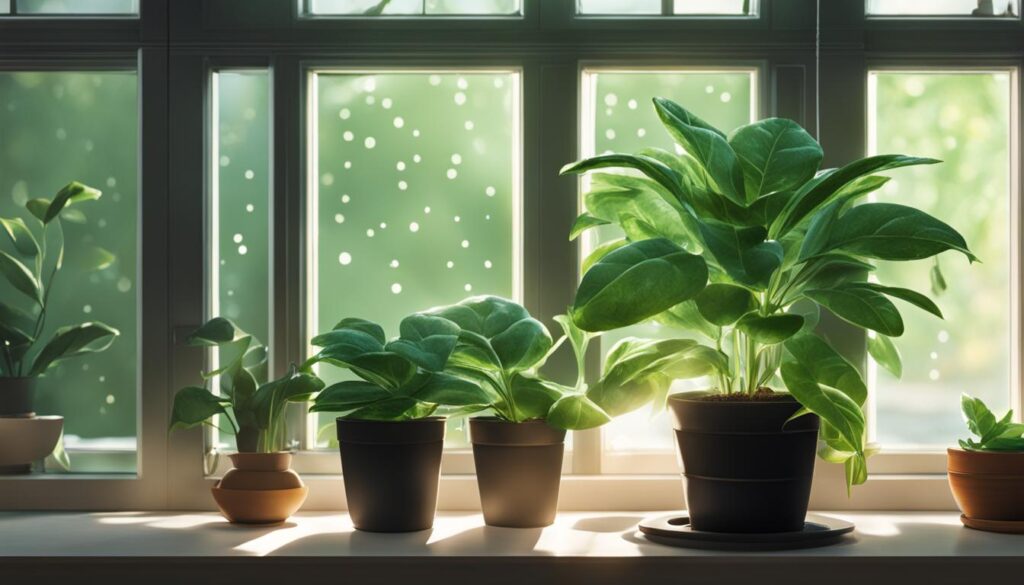
Ideal Growing Conditions for Polka Dot Plants
| Conditions | Requirements |
|---|---|
| Light | Bright, indirect light |
| Temperature | Minimum 60 degrees Fahrenheit |
| Humidity | At least 50 percent |
| Soil | Well-draining, rich in organic matter |
| Pruning | Regular pinching back for bushier growth |
| Propagation | Stem cutting rooted in water or sowing seeds on warm, moist soil |
Troubleshooting Common Issues with Polka Dot Plants
Polka Dot Plants, also known as Hypoestes phyllostachya, are generally low-maintenance plants, but they can encounter a few common issues that may affect their health and appearance. It’s important to be aware of these problems and take appropriate measures to address them.
One of the most common issues with Polka Dot Plants is pest infestations. These plants can attract mealybugs, aphids, and whiteflies. If you notice any signs of these pests, such as sticky residue or small insects on the leaves, it’s crucial to take action immediately. You can try using insecticidal soap or neem oil to control and eliminate these pests.
Polka Dot Plants are also susceptible to various diseases, such as root rot, leaf-spot diseases, and powdery mildew. These issues can be caused by overwatering or high humidity levels.
To prevent these diseases, it’s important to ensure proper drainage, allow the soil to dry out between waterings, and avoid excessive moisture on the leaves. If you notice any signs of disease, such as brown or spotted leaves, it’s best to remove the affected parts and treat the plant with a suitable fungicide.
Another common issue you may encounter with Polka Dot Plants is fading leaf color. This can occur due to inadequate light or excessive sunlight exposure. If you notice the leaves losing their vibrant colors, consider adjusting the plant’s lighting conditions.
Move it to a location with bright, indirect light or provide some shade if it’s exposed to too much sun. This should help revive the plant’s color and maintain its attractive appearance.
FAQ
How often should I water my Polka Dot Plant?
Water your Polka Dot Plant when the top half-inch of soil has dried out. Avoid overwatering, as this can lead to root rot.
How often should I fertilize my Polka Dot Plant?
Fertilize your Polka Dot Plant once a month during the spring and summer using a balanced, water-soluble fertilizer.
Can I grow a Polka Dot Plant outdoors?
Yes, Polka Dot Plants can be grown outdoors as annuals in warm climates. However, they also make great houseplants when grown indoors.
How do I propagate a Polka Dot Plant?
Polka Dot Plants can be easily propagated through stem cuttings rooted in water or by sowing seeds on the surface of warm, moist soil.
What should I do if my Polka Dot Plant’s leaves are turning brown?
Brown leaves can be a sign of inadequate water or humidity. Ensure that you are watering your plant properly and maintaining the recommended humidity level.
How do I prevent pest infestations on my Polka Dot Plant?
Common pests that can affect Polka Dot Plants include mealybugs, aphids, and whiteflies. Regularly inspect your plant for signs of pests and treat them accordingly.
How do I promote bushier growth in my Polka Dot Plant?
To promote bushier growth, regularly prune or pinch back the top two leaves on each stem. This will encourage the plant to branch out and become fuller.
Can I grow a Polka Dot Plant in low light conditions?
Polka Dot Plants thrive in bright, indirect light. While they can tolerate lower light conditions, they may not exhibit their full variegation and coloration.
Should I remove the flower spikes on my Polka Dot Plant?
It is recommended to remove flower spikes to prevent the plant from going into dormancy and to encourage longer-lasting foliage.

